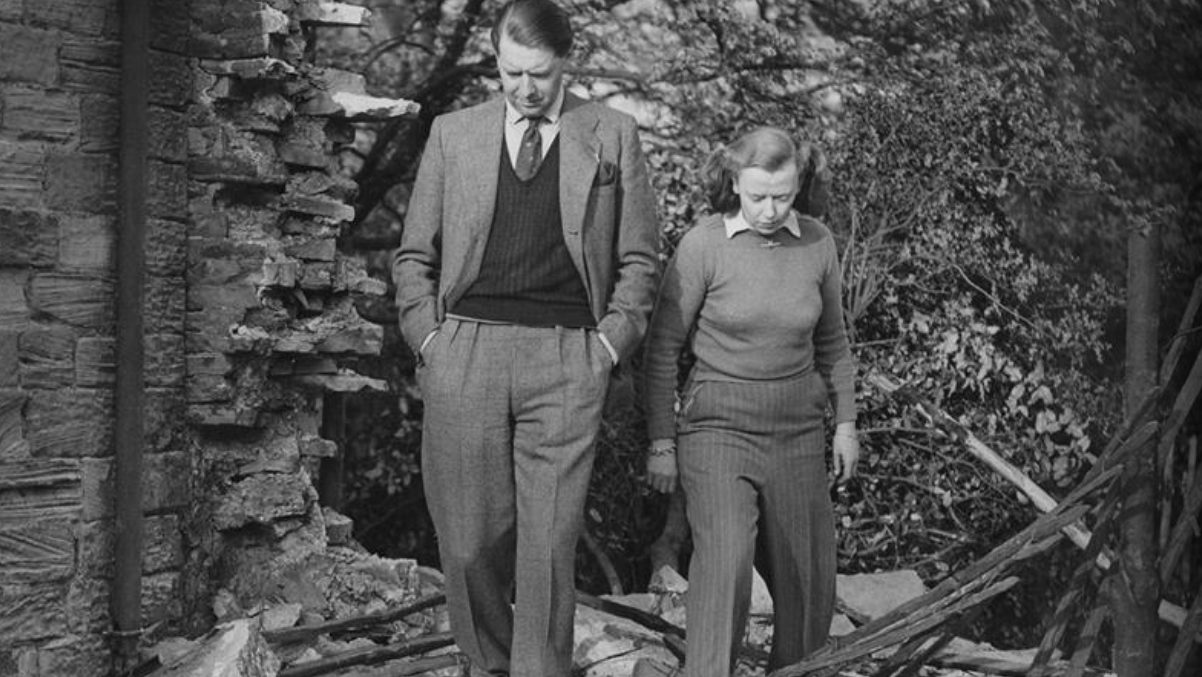It is difficult to overstate how important the arrival in the 1950s of the lady Mabel College of Physical Education was to the history and particularly the survival of Wentworth Woodhouse.
Back in the Late 1940s
Country houses were largely seen as white elephants – built for a long-gone and unsustainable way of life that had no relevance in a post-war society. In fact, during the 1940s and 1950s, the UK was losing country houses at the rate of one per week as owners demolished them or they succumbed to fire or abandonment.
Huge social changes had taken place making staffing country houses very difficult. Running costs were enormously expensive. Taxation, in particular punitive Death Duties (Inheritance Tax), could involve families paying up to 80% of their net worth to the Treasury and the sources of income upon which landed families had relied for generations had severely declined in real terms, especially if those revenues came from agricultural holdings.
For the Fitzwilliam Family
Much of their income came from the coal mines they owned around Wentworth Woodhouse. In 1947, coal mines were nationalised and although the family did receive financial compensation, it didn’t make up for the huge annual revenues that their coal mines had provided. This didn’t mean that they were poor, they had other sources of income, but it did mean that they had to look at how realistic keeping Wentworth Woodhouse was, given that they had other large houses and estates in North Yorkshire, Ireland and Peterborough. In 1947, the Peterborough estate was not part of the Wentworth estate, they did not join back until 1952.
At this time, owners of houses like Wentworth Woodhouse didn’t need planning permission to demolish their stately homes, they only need to serve a Notice of Intent. It’s estimated that throughout the 1900s, over 2,000 country houses were lost. The enormous scale of Wentworth Woodhouse made it particularly vulnerable and, in many ways, it’s a miracle that the house did survive to the present day.
Peter, the 8th Earl Fitzwilliam, was passionate about securing a future for Wentworth Woodhouse. In 1948, with the support of his aunt, Lady Mabel Smith, he offered the house to West Riding County Council for use by the Education Authority on a 50-year full repairing lease. This meant that the Council was responsible for the cost of its upkeep. The Lady Mabel College of Physical Education was established across the whole of the East Front, in the Stables and Riding School. It was this visionary approach that saved the structure of Wentworth Woodhouse and allowed the family to ‘retreat’ into the slightly older, Baroque house attached to the Palladian East Front.

Post-War Britain
But the hard times that post-war Britain visited on the house were far from over. Peter was tragically killed in a plane crash in May 1948, at the age of 38. He was succeeded by the 9th Earl Fitzwilliam, Eric, Peter’s first cousin once removed. Eric was a reclusive alcoholic and he died in 1952 with no male heir and so the title and estates passed to his second cousin Tom, who had grown up at Milton, the family’s estate in Northamptonshire. Tom visited Wentworth Woodhouse occasionally, but mainly for the grouse shooting and for the St Ledger races in Doncaster. He died in 1979 and, with no male heirs in the family, the title Earl Fitzwilliam became extinct. A few years later, the lease for the East Front of the house was relinquished by the then tenant, Sheffield Hallam University and in 1988, Tom’s descendants took the decision to put the whole of Wentworth Woodhouse on the open market for the first time in over 250 years.
The house and grounds are currently owned by the Wentworth Woodhouse Preservation Trust. Its mission is to secure a sustainable future for the site.
Sign up for our Black Diamonds Tour
If you’d like to learn more about this fascinating period in the history of Wentworth Woodhouse, sign up for our Black Diamonds Tour
Black Diamonds Tour